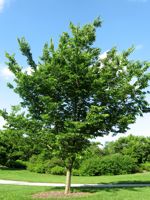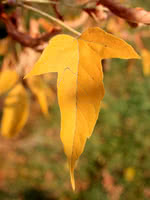Mon-Fri 9am - 5pm Mountain time
Common Hackberry vs Manitoba Maple
Celtis occidentalis
Acer negundo
The Common Hackberry is a medium-sized deciduous tree that resembles the American Elm but is immune to Dutch Elm Disease. They are versatile and can adapt to a variety of growing conditions.
It produces purple-red, berry-like fruit with a large seed in the center. Both the sweet flesh, which tastes similar to dates, and the crunchy seed are edible. The fruit remains on the tree throughout the winter, offering a valuable food source for birds and other wildlife.
The Common Hackberry can also be a great addition to a pollinator garden. The tree itself is a host for the larvae of several butterfly species and the flowers provide a source of pollen and nectar.
Manitoba Maple is a fast growing tree with great fall color. These trees are typically grown as feature or shade trees on larger properties and acreages. Manitoba maples are cold hardy and tolerant of a wide range of soil moisture conditions.
Note that Manitoba Maple is considered toxic to horses.
Common Hackberry Quick Facts
Manitoba Maple Quick Facts
In row spacing: 2.4 - 3 m (8 - 10 ft)

